1905 India Revivals I (20 Locations)
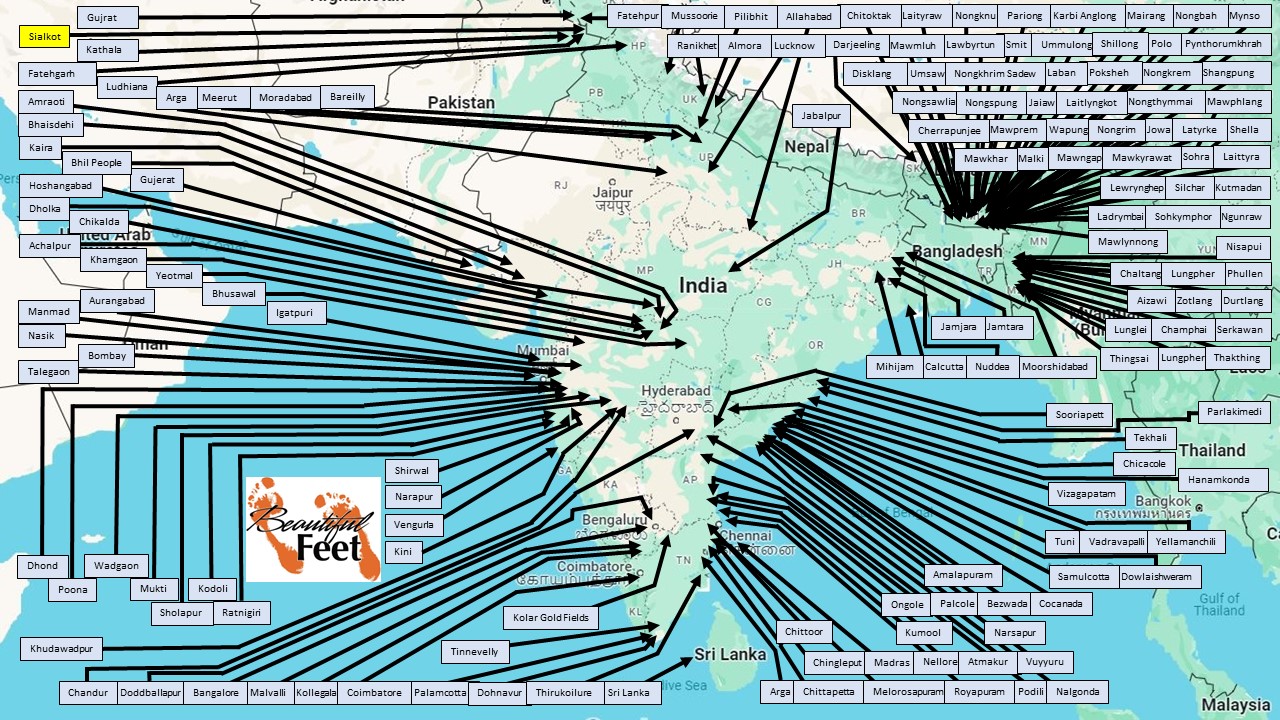
Some of the many revivals that spread across India from 1904-1906
Background to this Series of India Revivals
From 1904-1906, revival swept across India, touching every mission station and church, regardless of the denomination. Episcopalians, Presbyterians, Congregationalists, Baptists, Lutherans, Methodists, Brethren, Anglicans, Christian and Missionary Alliance, London Missionary Society, and the YMCAs and YWCAs, wherever the revival was welcome, blessings came. In addition, it fostered significant unity, breaking down previous barriers between denominations.
The 1904 Sialkot, India Revival appears to have been the spark that ignited the sweeping fires. Subsequently, upon receiving reports of the 1904-1905 Welsh Revival, prayer for revival intensified to such an extent that revival in India seemed unstoppable. The outcomes are documented in the following accounts:
- 1904 Sialkot, India Revival (Over 5 locations)
- 1905 Khasi Hills Revival (Dozens of Locations)
- 1905 Mukti Revival (5 Locations)
- 1905 Revival at Dohnavur (2 Locations)
- 1905 India Revivals I (20 Locations)
- 1905 India Revivals II (8 Locations)
- 1905 India Revivals III (5 Locations)
- 1906 India Revivals IV (10 Locations)
- 1906 India Revivals V (8 Locations)
- 1906 India Revivals VI (8 Locations)
- 1905-1906 India Revivals VII (9 Locations)
- 1905-1906 India Revivals VIII (14 Locations)
- 1906 India Revivals IX (8 Locations)
- 1906 Aurangabad, India Revival (5 Locations)
- 1906 Mizo, India Revival (13 Locations)
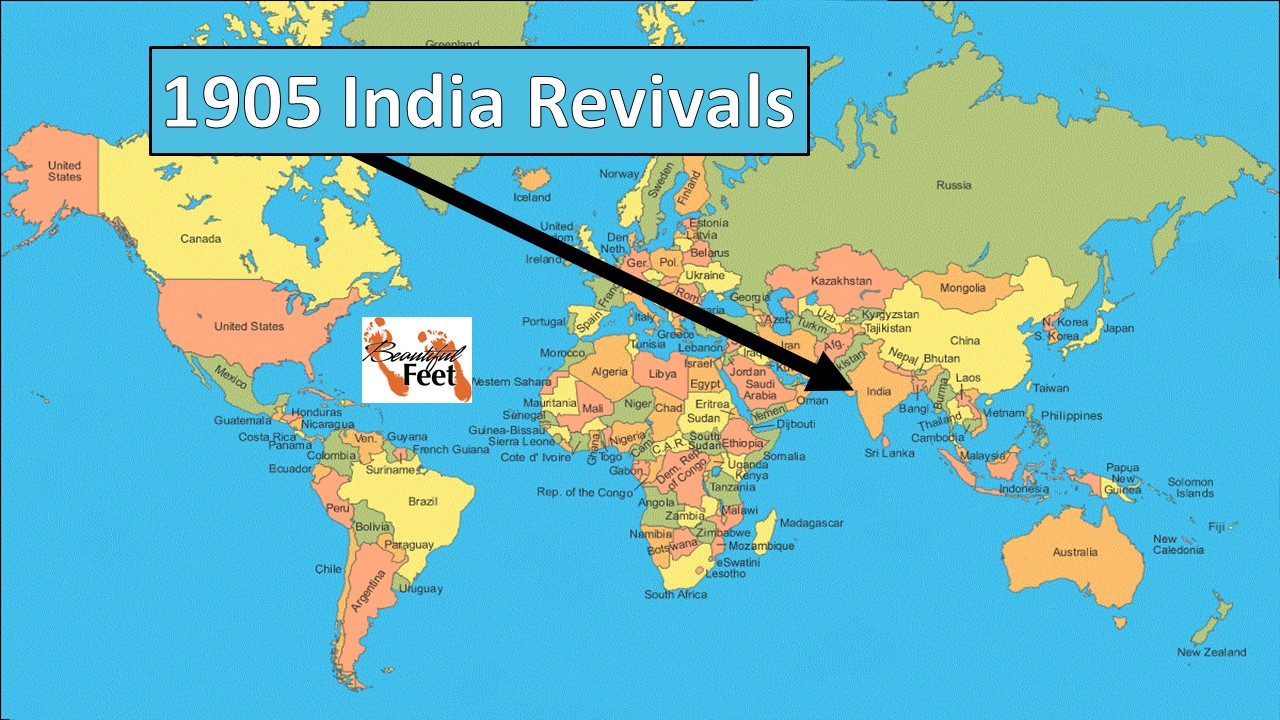
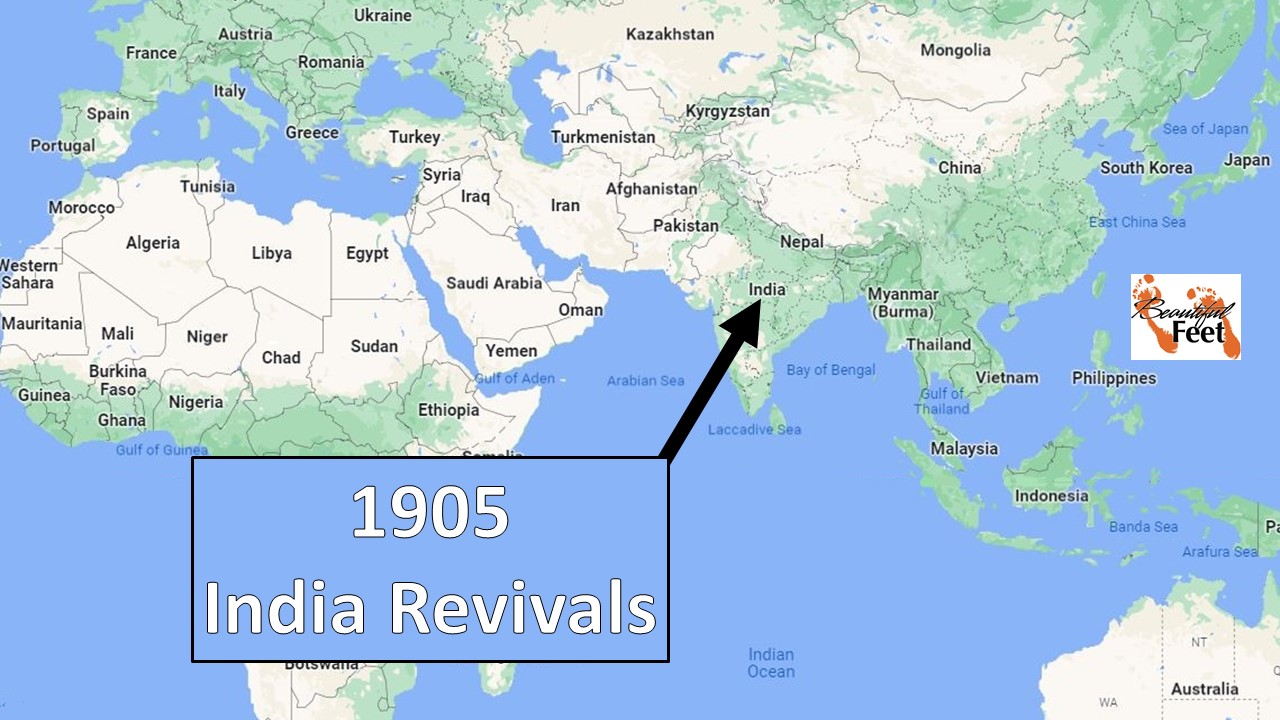
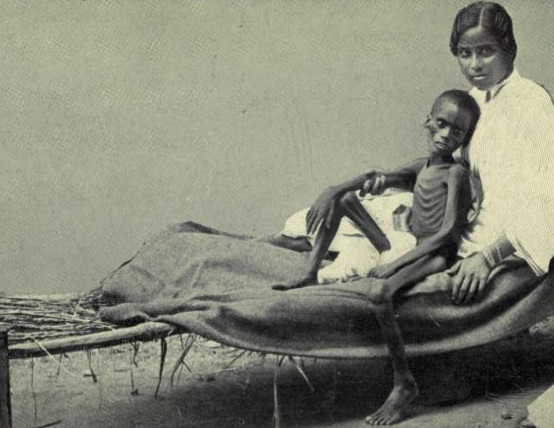
Victim of 1896 Famine
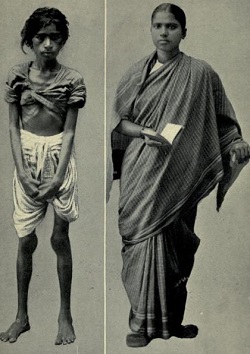
Before and After:
Famine victim
becomes evangelist
Extraordinary Prayer
In the autumn of 1896 famine came to central India, and a plague struck Bombay, leaving thousands dead.
Many felt this was a judgment of God and it led the believers to begin intense intercession for this situation to change. There was also intense prayer, pleading with God for a genuine revival among Christians.
Several entire days of prayer were called, in addition to other scheduled times of prayer. This involved people in India, as well as those from all over the world.
It was not only that here and in other parts of the world men and women got close hold of God in mighty prayer, but there are those who from that day have prayed more and with greater persistence and fervour than they ever did before. . . We must have more prayer; then there will be more power…
Revival at Pilibhit
After the above three India revivals occurred, the next one happened at the Industrial Evangelistic Mission in the city of Pilibhit.
Mr. and Mrs. Lawson were the supervisors of this mission. They were Episcopal Methodist missionaries and had been praying for the conversion of all the Indians who were employed by the mission (probably construction workers, gardeners, and other domestic workers).
After several conversions occurred, the mission station held special meetings with an American missionary—Mr. Salisbury. During these meetings the presence of God came upon the boys (possibly those attending the school at the mission compound), and it led to conviction and confession of sins, along with restitution. The boys returned stolen property and went in groups to local farmers whose fields and orchards they had robbed. As they asked for forgiveness, the farmers, often with tears in their eyes, forgave them.
As the news of this development spread throughout Pilibhit and surrounding villages, Hindus began asking what it all meant. The wife of the supervisor at the mission, Mrs. Lawson, saw this as an opportunity to share about Jesus’ power to save and forgive sins, and it wasn’t only the missionaries that began to share, but also the recently converted young men, as Mrs. Lawson wrote:
To see the converted boys kneeling beside the unconverted, pointing them to the Saviour, is a sight to rejoice the angels in heaven. It is wonderful how the Spirit has taught them so quickly. Many were regenerated one day and baptised by the Holy Spirit the next. Their testimony is clear.
Demon Possession
One of the boys was possessed by a mute spirit. The believers prayed for him for several hours, but he refused to speak a word. They called the evangelist (possibly Mr. Salisbury), and speaking to the demon he commanded it to leave.
All at once the boy seemed to be freed, and began to cry out to God to save him. He was indeed glad to be free and was soon rejoicing in the Saviour.
Answer to Prayer
There had been several boys who had run away from the school, and after those at the school prayed for them, they returned. And with all of them tired of their wayward lifestyles, they chose to submit themselves to Jesus.
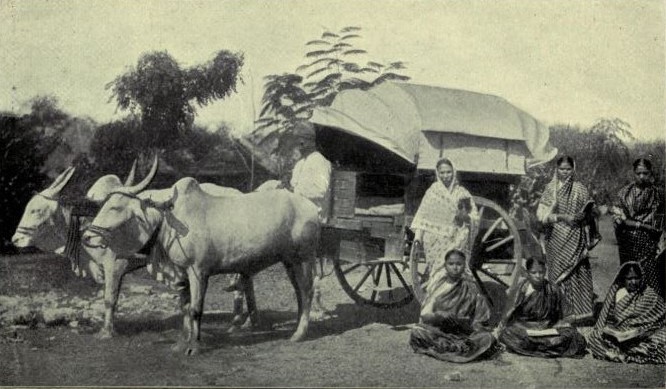
A group of lady evangelists setting out to visit villages in the surrounding area.
The Revival Spreads to Mussoorie—September 1905
As the revival continued at Pilibhit, Mr. and Mrs. Salisbury, together with Mr. Lawson, went to visit the other branch of the Industrial Evangelistic Mission in Mussoorie. Prior to their arrival there, there had already been some conversions taking place. This mission team then held meetings for 10 days, and then a breakthrough occurred on Sunday, September 17, when the Holy Spirit’s power came down.
Hearts previously hard and unyielding melted. Those under conviction of their sins began praying for mercy as they confessed those sins.
As some shared their desire to be converted, and others to be sanctified, everyone began praying simultaneously, and as the account states:
The baptism of the Holy Spirit and fire came in an indescribable manner. As by faith received the Holy Ghost, boy after boy arose and with streaming tears of joy testified to the wondrous gift.
Just like what had occurred in Pilibhit, the same occurred in Mussoorie. The confession of sin by one of the leading workers, as well as by one of the leaders among the boys, opened the spiritual floodgates and in came the flow of the Holy Spirit’s power.
Results of the Revival at Mussoorie and Pilibhit
► After the revival started there developed a sincere love for the Bible.
► There was a renewed desire for personal devotions and communion with God.
► There was a burning desire for the salvation of souls.
► Physical work around the mission compound was entered into with renewed vigor.
Revival at Yeotmal (Yavatmal)
In August 1905, the Free Methodist Mission at Yeotmal closed their schools so the missionaries, teachers, and students could spend time in prayer, asking the Lord for revival that they had been hearing about occurring in other locations.
It was on a Saturday night in August, and with the regular prayer meeting having already ended, there were still 20 that were continuing in prayer at 10:30 p.m., when
The Holy Spirit came like a shock of electricity; some shouted the praises of God, some danced, some ran, and some fell to the ground, under the power of God. All present were Christians with one exception, and she was converted. The others were all baptised with the Holy Spirit.
This visitation of the Holy Spirit led to evangelism taking place among the unconverted at the orphanages in the area. The Holy Spirit’s power accompanied those sharing the Gospel, and there was genuine conviction of sin, resulting in confession, forgiveness, and overwhelming joy.
The Rev. J. T. Taylor wrote of this occurrence:
It is wonderful to us not only that so many have sought and found the Lord in a short time; but the depth of experience, the insight into spiritual things, the perception of the condition of sinners, as to whether they are seeking sincerely, and whether they have received what they profess, is marvellous indeed.
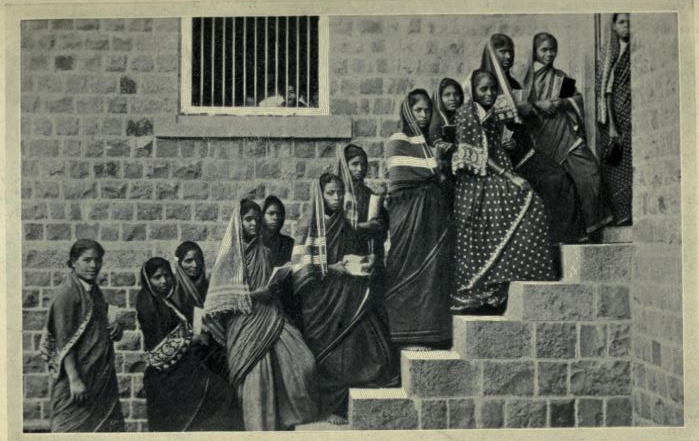
Female evangelists were highly effective during this revival.
This group is seen going to the Mukti church to pray
before starting out for their evangelistic work in the villages.
Revival Spreads to Bombay (Mumbai), Igatpuri, and Lucknow
Having witnessed revivals occurring in other locations, two missionaries went to Bombay to share firsthand what they saw. After communicating with those of the Methodist churches there, the believers began to pray for a similar blessing, and they were not disappointed, as the Holy Spirit was poured out upon them, as well as on the churches in nearby Igatpuri.
Soon the news of these revivals arrived at the Methodist Episcopal Mission at Lucknow, and they also received an outpouring of the Spirit of God.
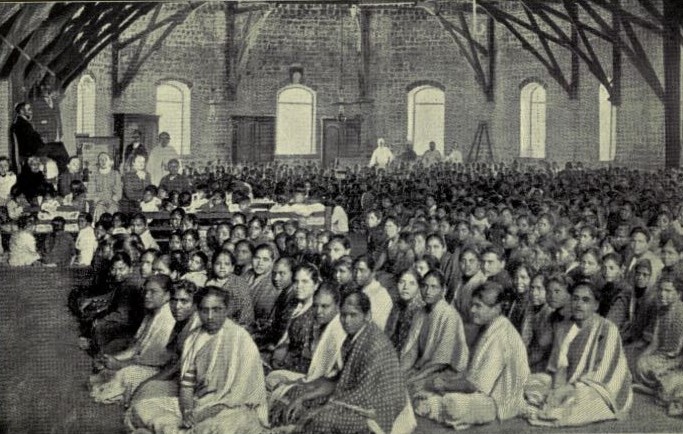
Typical prayer meeting
Revival Spreads to Meerut
By October 1905, the Church Mission Society (C.M.S.) station at Meerut experienced a visitation of the Holy Spirit.
There had already been much prayer for this outpouring, and as reports of revivals occurring in other locations throughout India arrived, prayers of the believers in Meerut were increased. One of the missionaries at Meerut at that time, W. G. Proctor, wrote what he observed as the Holy Spirit came in answer to their prayers:
In the middle of September I noticed one or two members were praying for the Holy Spirit, and hope revived. On Sunday, October 15, God greatly blessed the message at the morning service. In the afternoon I was led to speak personally to two men. Both acknowledged their sins and gave themselves to the Lord. One said he had been deliberately hardening his heart against Christ for the last three years. Both of them now, and their wives too, are rejoicing in the Lord, and their lives bear witness to the reality of their change of heart. That was the beginning of blessing.
All through that week the Proctors were ministering to many people who were being convicted of their sins. The prayer meetings became intense as the Holy Spirit worked, bringing to the surface buried sins. This conviction led to confession, accompanied with deep grief and tears of anguish.
Within 10 days there were 15 that were converted. There were also close to 50 who received the baptism of the Holy Spirit, having experiences they had never known before.
It was so strange, that all they could say was, ‘We are full of joy, we do not understand it, and never knew anything like it before.’ There were no unusual manifestations of the Spirit’s working, but His presence and power were unmistakable, and everything was deep and real.
Results of the Revival at Meerut
► Reconciliation was made between those who previously were at odds.
► Peace and unity prevailed in a way they had never experienced.
► Those who converted to Christ remained faithful, with no backsliding.
► Many of those converted were young.
Revival Spreads to Hoshangabad (Narmadapuram)
In October 1905, there was a 4-day gathering held at the girls’ orphanage belonging to the Friends Mission at Hoshangabad. On the 2nd evening the Holy Spirit came similarly as to how it is described in the book of Acts—like “a rushing mighty wind” (Acts 2:1-2). This left everyone present calling out to God in prayer, that is, hundreds of voices, simultaneously. One of the missionaries present at that time described the moment like this:
Being deaf I rarely hear a prayer, but in the rush of sound I could plainly hear those around me. How direct and different each prayer was! Confession of sin and restitution followed that first outpouring of the Spirit, and it was good to hear the testimonies given in the last meeting.
At the annual celebration of the Friends Mission, held on New Year, 1906, many more were converted.
► The revival continued to spread throughout the area.
► The girls living at the orphanage demonstrated dramatic changes.
► There were also men and women who were converted, revived, and making restitution for sins committed.
Revival at Tirukoilur
Revival came to several places in South India at this time, including Tirukoilur, the Danish Mission in South Arcot district.
Rev. T. Walker, of the Church Mission Society in Tinnevelly, conducted special missions among the Tamil Christian congregations of that district. In the latter months of 1905 he conducted special meetings at the Church Mission Society stations in central India at Lucknow, Jabalpur, Agra, Manmad, Poona, Nashik, and Allahabad. About these meetings, Walker said:
I found everywhere a real desire for a better state of things, and an earnest longing for a revival of true religion. Both the missionary body and the Indian Church are feeling, as never before, the need of power from on high. Surely this means that God, who is exciting this desire, is going to satisfy it to the full. I have returned to the South to find that He has been working during my absence, both in Palamcotta and Dohnavur. It is only little ‘portions’ of His ‘ways’ which we have seen as yet, but many of us are waiting to hear ‘the thunder of His power’ throughout India.
Walker also conducted meetings at Mukti during the above tour and was able to witness the moving of the Holy Spirit at that location.
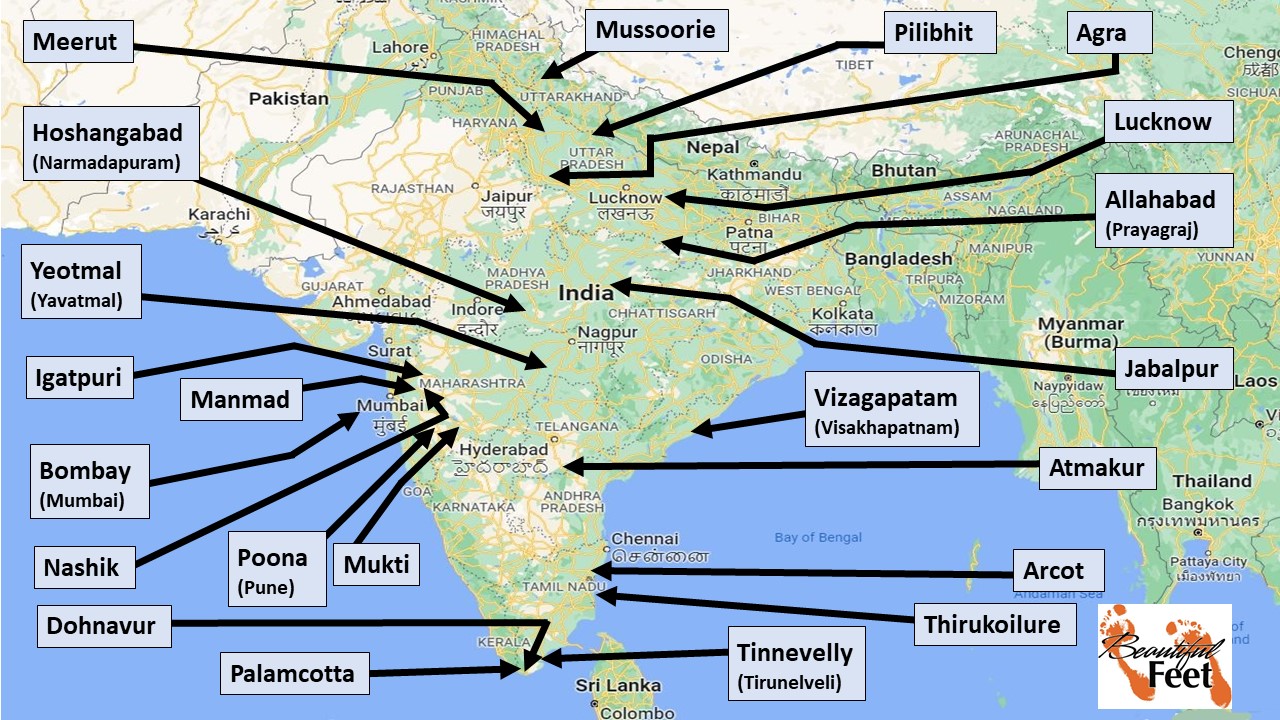
Locations mentioned in this account where the revival spread
The Revival at Dohnavur
Amy Carmichael, the leader of the mission in Dohnavur, tells that not everybody embraced the moving of the Holy Spirit:
After three months’ testing, the work abides and goes on apart from us. It seems to me this is a mark of the real thing. The meetings do not depend on us at all. The thing is of God. Some in India are doubtless saying, ‘The meetings are all excitement and emotion, all smoke.’ Someone in England said the same thing about Revivals there. His friend answered that his thinking showed his view-point. He was looking down the chimney, and so came in for the smoke. If only he would come into the heart of things, he would feel the warmth of the fire and know the reality of it all. Do not let us miss the fire in our fear of the smoke!
Similar to the criticism that Amy Carmichael and the Dohnavur Revival experienced, Panditia Ramabai, at Mukti, experienced the same, as she said:
It is sad beyond all expression that God’s children, who have been praying for years for an outpouring of the Holy Spirit,…should now, when God is beginning to answer their prayer, be so hasty in judging and picking their fellow Christians to pieces.
Revival at Atmakur
At Atmakur, revival came during November 1905 meetings. A Christian weaver and his wife were filled with the Spirit. That man went everywhere preaching the Gospel, while his wife did the same around their village. About forty people from four different villages were brought to Christ through their efforts. For years they had been the only Christians and had been greatly persecuted by those now saved.
Revival at Vizagapatam
At the London Missionary Society (L.M.S.) station in Vizagapatam, the Spirit was manifested in prayer, testimony, and fervent meetings. High-caste Hindus were also being drawn to Christ.
Sources
► A History of Missions in India by Julius Richter
► Revival in India by Helen S. Dyer
► World Atlas of Christian Missions by James S. Dennis
Return to List of Revival Stories
Chet & Phyllis Swearingen:
Office: (260) 920-8248
romans1015@outlook.com
Beautiful Feet
P.O. Box 915
Auburn, IN 46706

